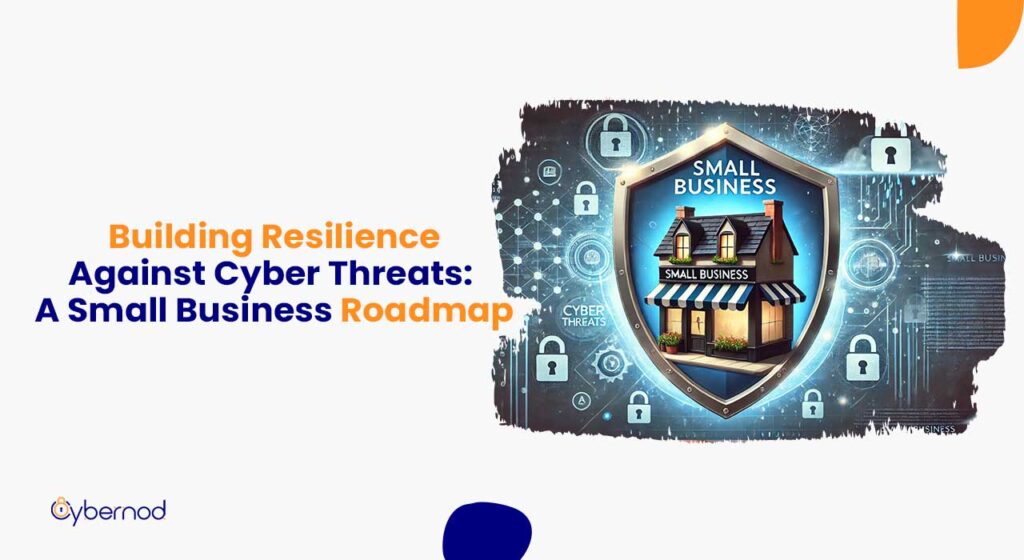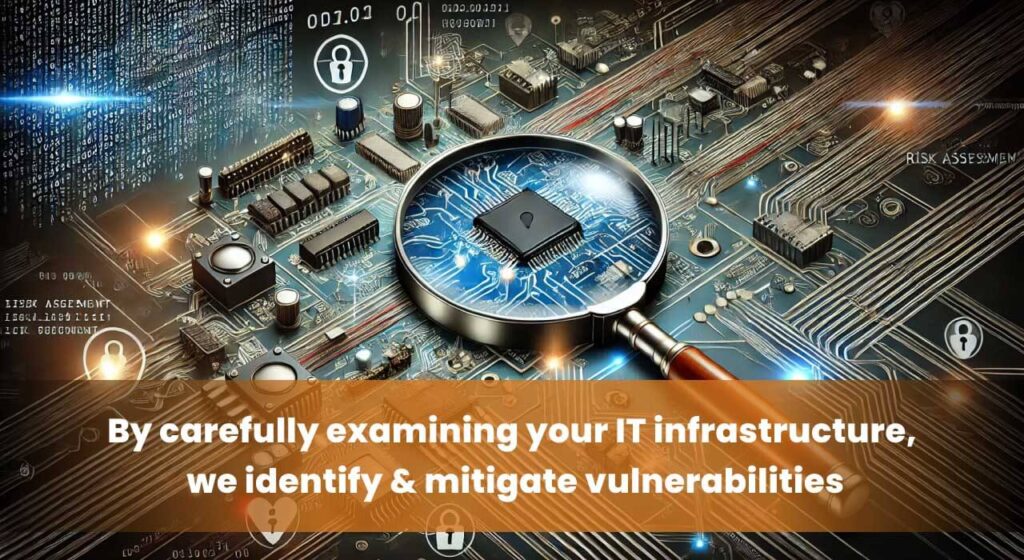
Small Businesses: Prime Targets in the Digital Age
The contemporary business environment is characterized by an escalating digital threat landscape. Cyberattacks, once the purview of large corporations, now pose a significant risk to organizations of all sizes, including small businesses. These entities, often lacking dedicated IT departments and robust security infrastructures, are particularly susceptible to cyber threats. From ransomware to data breaches, the potential consequences of a cyberattack can be catastrophic, leading to financial losses, reputational damage, and operational disruption.
Recognizing the urgency of this issue, a proactive approach to cybersecurity is imperative for small businesses. By implementing effective security measures and developing a comprehensive resilience strategy, organizations can mitigate risks, protect sensitive information, and ensure business continuity. This article aims to provide a practical roadmap, equipping small businesses with the knowledge and tools necessary to build a robust defense against cyber threats.
Understanding the Cyber Threat Landscape

The digital age has ushered in a complex and evolving threat landscape, with cyberattacks becoming increasingly sophisticated and prevalent. Small businesses, often perceived as easier targets due to limited resources, are particularly vulnerable to a range of cyber threats. Ransomware, a type of malicious software that encrypts a victim’s files and demands a ransom for their release, has emerged as a significant concern. Phishing attacks, which involve deceptive emails or messages designed to steal sensitive information, remain a persistent threat. Data breaches, resulting in the unauthorized access and exposure of confidential data, can have devastating consequences.
Beyond the immediate financial losses incurred from ransom payments, system restoration, and data recovery, cyberattacks can inflict substantial reputational damage. Loss of customer trust, legal liabilities, and regulatory penalties are just some of the potential ramifications. For businesses operating in the UAE, specific threats such as intellectual property theft, targeting of critical infrastructure, and state-sponsored cyber espionage warrant particular attention. Given the region’s economic diversification and digital transformation initiatives, it is imperative for small businesses to recognize the evolving nature of cyber threats and implement robust countermeasures.
Conducting a Cybersecurity Risk Assessment

A cybersecurity risk assessment is a systematic evaluation of an organization’s IT infrastructure to identify vulnerabilities, threats, and potential impacts. By understanding these factors, businesses can prioritize mitigation strategies and allocate resources effectively. A comprehensive risk assessment is essential to bridge the security gap analysis and develop a tailored cybersecurity strategy.
Identifying vulnerabilities is paramount in mitigating cyber risks. A thorough assessment involves several key steps. First, asset identification requires cataloguing all digital assets, including hardware, software, data, and networks. Subsequently, threat analysis involves identifying potential threats, such as ransomware, phishing, and data breaches, that could target the organization. A vulnerability assessment pinpoints weaknesses in systems, applications, and processes that could be exploited by adversaries. Finally, an impact assessment evaluates the potential consequences of a successful attack, considering factors like financial loss, reputational damage, and operational disruption.
Leveraging risk assessment tools and frameworks can streamline the process and enhance accuracy. The National Institute of Standards and Technology (NIST) Cybersecurity Framework provides a structured approach for managing and reducing cybersecurity risks. By adopting such frameworks and employing specialized tools, businesses can gain valuable insights into their security posture and make informed decisions to strengthen their defenses.
For a more in-depth look at how to conduct a cybersecurity risk assessment tailored to your specific needs in the UAE, consider consulting with Cybernod. Their comprehensive guide, “How Cybersecurity Risk Assessments Can Prevent Financial Loss in Small Businesses,” offers valuable insights and practical advice.
Developing a Comprehensive Cybersecurity Strategy

A tailored cybersecurity strategy is indispensable for safeguarding a small business. A one-size-fits-all approach is unlikely to address the unique vulnerabilities and challenges faced by each organization. A robust strategy encompasses three key pillars: people, process, and technology.
Employees constitute the first line of defense, and their role in preventing cyber incidents cannot be overstated. Comprehensive employee training and awareness programs are essential to cultivate a security-conscious culture. By educating staff about common threats like phishing and social engineering, businesses can significantly reduce the risk of human error.
Technology serves as the backbone of cybersecurity. Implementing a combination of security controls, such as firewalls, antivirus software, and intrusion detection systems, is crucial for protecting networks, systems, and data. These technologies serve as the primary defense mechanism against external threats. However, it is essential to select and configure these solutions appropriately to maximize their effectiveness.
Implementing Essential Security Controls

Establishing strong password policies is fundamental to preventing unauthorized access. Enforcing the use of complex passwords, requiring regular updates, and implementing multi-factor authentication can significantly enhance account security. Additionally, maintaining up-to-date software and operating systems through regular software updates and patching is vital to closing security vulnerabilities that cybercriminals often exploit.
Data encryption provides a robust safeguard against unauthorized access to sensitive information. By converting data into an unreadable format, businesses can protect it from falling into the wrong hands, even if a data breach occurs. Complementing encryption with regular data backups is crucial for business continuity and disaster recovery.
Access controls and network segmentation are essential for limiting the potential damage of a security breach. Implementing robust access controls ensures that only authorized individuals can access specific systems and data. Network segmentation divides the network into smaller, isolated segments, limiting the spread of malware and other threats. By carefully considering these security controls, businesses can significantly reduce their exposure to cyber risks.
Leveraging Cybersecurity Technologies

To effectively manage and mitigate cyber risks, small businesses can leverage a variety of cybersecurity technologies. Cloud-based security solutions offer scalable and cost-effective protection, providing access to advanced security features without the need for extensive on-premises infrastructure. These solutions can help safeguard data, applications, and networks from emerging threats.
Security information and event management (SIEM) systems play a pivotal role in enhancing an organization’s security posture. By collecting, correlating, and analyzing security data from various sources, SIEM solutions enable businesses to detect anomalies, identify potential threats, and respond to incidents promptly. This technology empowers organizations to gain valuable insights into their security landscape and make data-driven decisions.
A critical component of any robust cybersecurity strategy is incident response planning. This involves developing a comprehensive plan to address and mitigate the impact of a cyberattack. By outlining clear roles, responsibilities, and procedures, businesses can minimize downtime, protect sensitive data, and restore operations efficiently. A well-crafted incident response plan is essential for building resilience and safeguarding against future threats.
Building a Culture of Cybersecurity

A strong cybersecurity for small business strategy extends beyond technology; it encompasses a company’s culture. Employee awareness is paramount in preventing cyberattacks. By educating staff about common threats, such as phishing and social engineering, businesses can significantly reduce the risk of human error. Regular training sessions, phishing simulations, and clear communication channels can foster a security-conscious workforce.
Leadership plays a pivotal role in cultivating a security-centric culture. By demonstrating a commitment to cybersecurity, executives can inspire employees to prioritize security in their daily operations. Setting clear expectations, allocating resources for cybersecurity initiatives, and recognizing employees’ contributions to security can reinforce the importance of safeguarding the business.
To foster a security-conscious culture, consider implementing the following strategies:
- Promote open communication: Encourage employees to report suspicious activities without fear of retaliation.
- Security champions: Identify and empower employees to act as cybersecurity advocates.
- Regular assessments: Conduct periodic security awareness assessments to measure employee knowledge.
- Incentives: Offer rewards or recognition for employees who demonstrate exemplary security practices.
By prioritizing employee awareness and fostering a security-centric culture, small businesses can significantly enhance their resilience against cyber threats.
Compliance and Regulations
Adherence to cybersecurity regulations is imperative for businesses operating in the UAE. The UAE Cyber Security Council has established a robust regulatory framework aimed at safeguarding critical infrastructure and protecting sensitive data. Complying with cybersecurity regulations is not merely a legal obligation but also a strategic imperative. Failure to comply may lead to substantial financial penalties, reputational harm, and operational disruptions.
To ensure compliance, businesses should familiarize themselves with the specific regulations applicable to their industry and size. The UAE Cyber Security Council’s website provides valuable resources and guidance on meeting regulatory requirements. By investing in cybersecurity compliance, organizations can mitigate risks, build trust with customers, and demonstrate a commitment to responsible business practices.
Measuring and Improving Cybersecurity Posture
Continuous monitoring and evaluation are essential for maintaining a robust cybersecurity posture. Regular cybersecurity audits provide valuable insights into an organization’s security effectiveness, identifying vulnerabilities and areas for improvement. By analyzing audit findings and performance metrics, businesses can assess the efficacy of existing security controls and identify emerging threats. A dynamic threat landscape necessitates an adaptive approach to cybersecurity. Regularly reviewing and refining the cybersecurity strategy based on assessment results ensures that the organization remains resilient against evolving challenges.
In today’s interconnected business landscape, proactive cybersecurity for small business is no longer an option but a necessity. By understanding the evolving threat landscape, conducting comprehensive risk assessments, and implementing robust security measures, small businesses can significantly enhance their resilience against cyberattacks. A multifaceted approach encompassing technology, processes, and employee awareness is essential for safeguarding sensitive information and ensuring business continuity. By taking decisive action to protect their digital assets, small businesses can mitigate risks, preserve their reputation, and thrive in the digital age.
Categorized in:
Comments